MAXI Image Gallery
The Monitor of All-sky X-ray Image (MAXI) is an all-sky monitor capable of
viewing more than 1,000 x-ray sources. Attached to the International Space
station, MAXI orbits the earth every 96 minutes. |

|
MAXI Capabilties
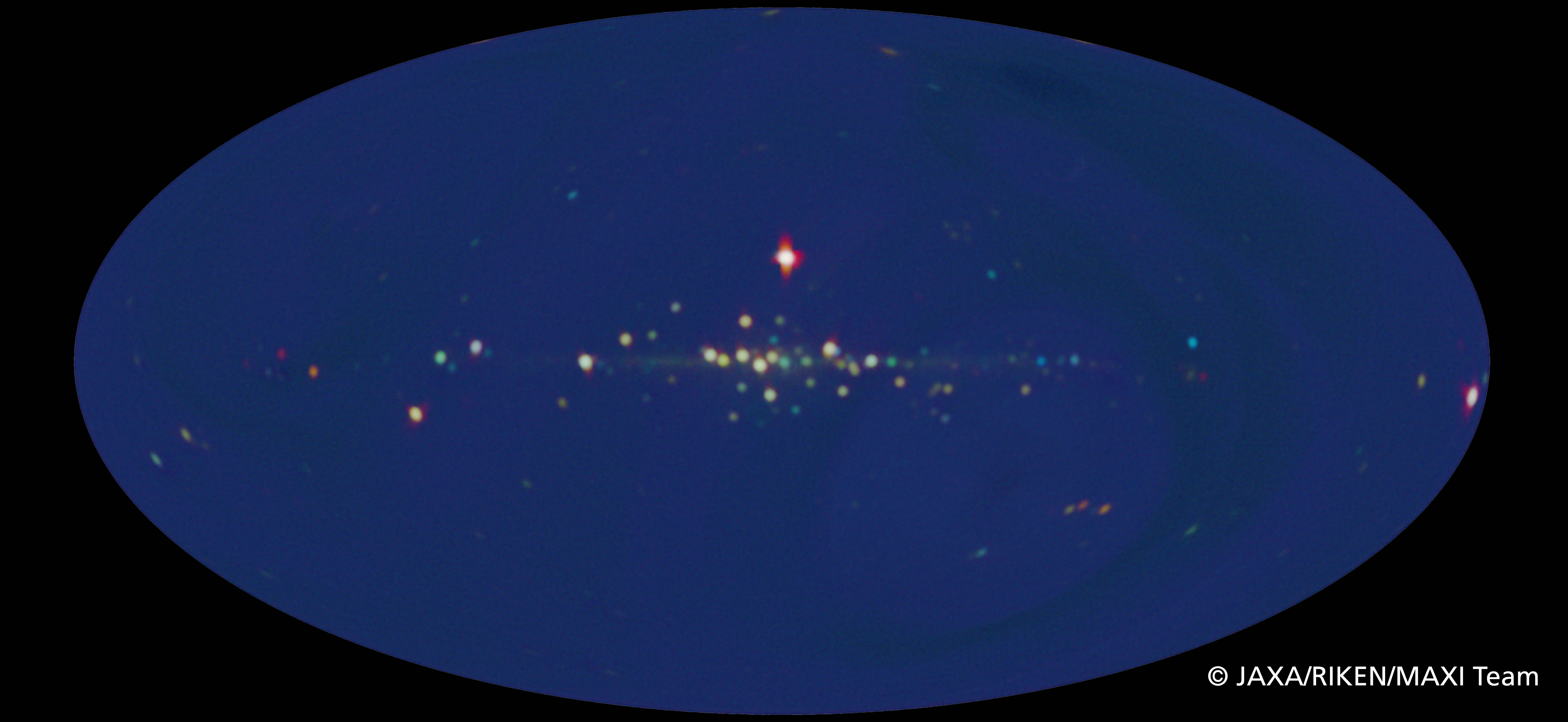
An all-sky map (mollweide projection in galactic coordinates) shows a variety of
X-ray sources mapped out by the Gas Slit Camera (GSC) on MAXI between August 15 and
October 29, 2009.
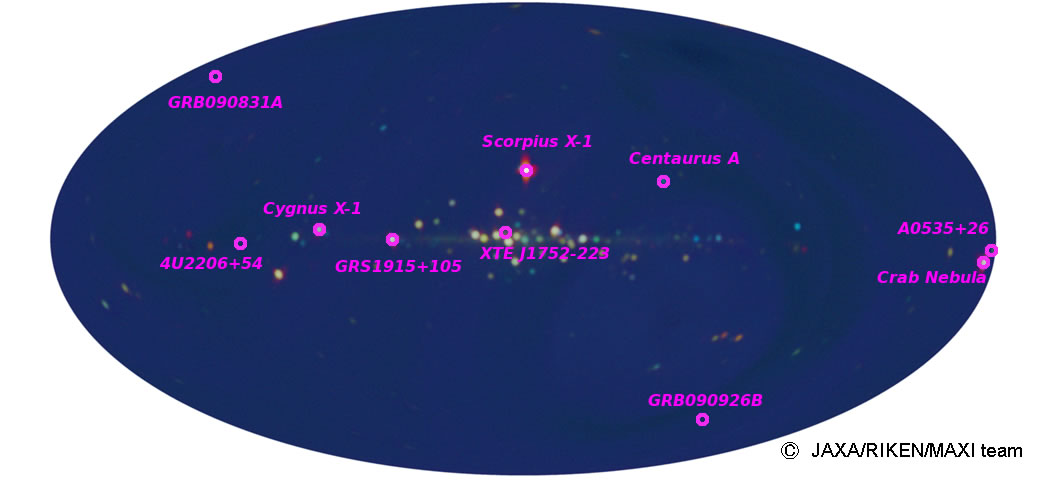
A version of the map above with major sources of X-ray emission labeled.

Color in the maps above was created by coding the maps at each of three different wavelengths. Red comes from the lower
energy range X-ray photons (“softer”) between 2–4 kev, green from mid-range (4–8 kev) and blue from
higher energy X-rays (8–16 kev; “harder”).
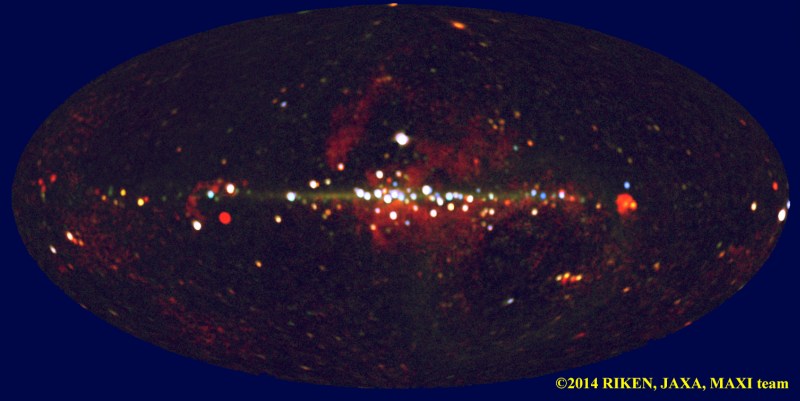
A similar all-sky map, but now with a much longer composition period (49 months between 2009 and 2013) and combining data
from both the GSC and SSC instruments. This map shows more than 500 individual sources as well as the galactic ridge
emission and faint diffuse structures. Red sources are mostly supernova remnants. Orange sources are low-mass X-ray binaries.
Blue source are predominantly binary X-ray pulsars. The extended exposure brings out fainter details, including
extra-galactic objects. Note that in this particular composition, red is 0.7–2 kev, but green and blue are in the same
energy ranges as given above.
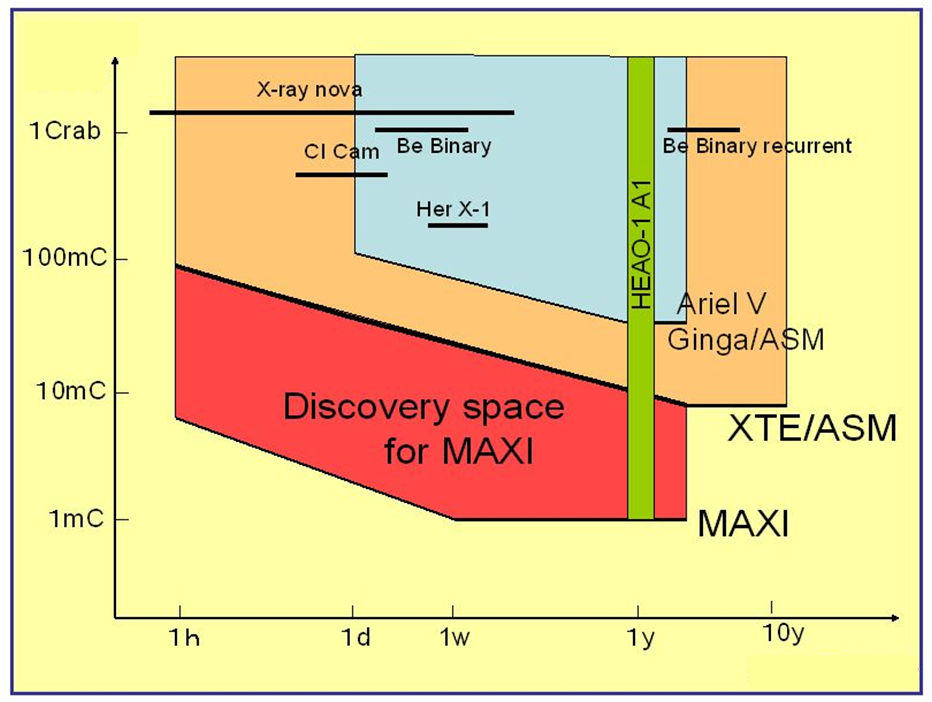
Figure showing the X-ray regime in which MAXI operates, compared to its historical peers. MAXI can make a (mostly) complete
sky map down to roughly 100 mCrab every orbit, and by compositing successive orbits, down to roughly 10 mCrab in a week
(approximately 100 orbits). Extending this to a much longer time scale can bring a detectable signal down to as low
as 1 mCrab, roughly the noise limit of the instrument.
MAXI on the ISS

Visualization of the International Space Station
(ISS) with the Japanese Experiment Module (JEM; also known as Kibo (Hope)) shown facing forward. MAXI is mounted on the
Exposed Facility (EF; also known as the “Terrace”) which juts out to the side of JEM.
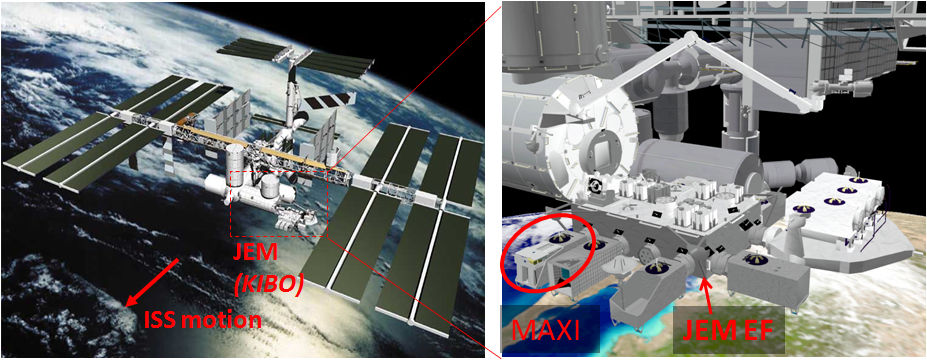
Labeled diagram of the ISS with MAXI highlighted.

Labeled diagram of the ISS with MAXI fields of view and the motion and rotation axes of the ISS included.
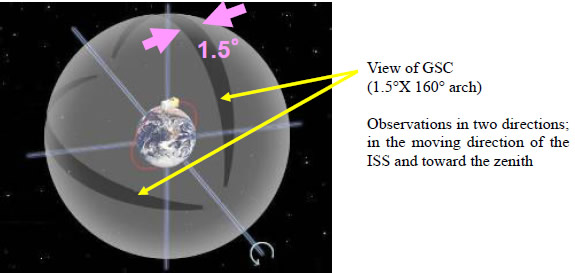
A diagram of the instanteous field of view of the MAXI GSC instruments: the motion of the ISS orbiting the Earth scans
out a nearly complete sky scan every orbit.
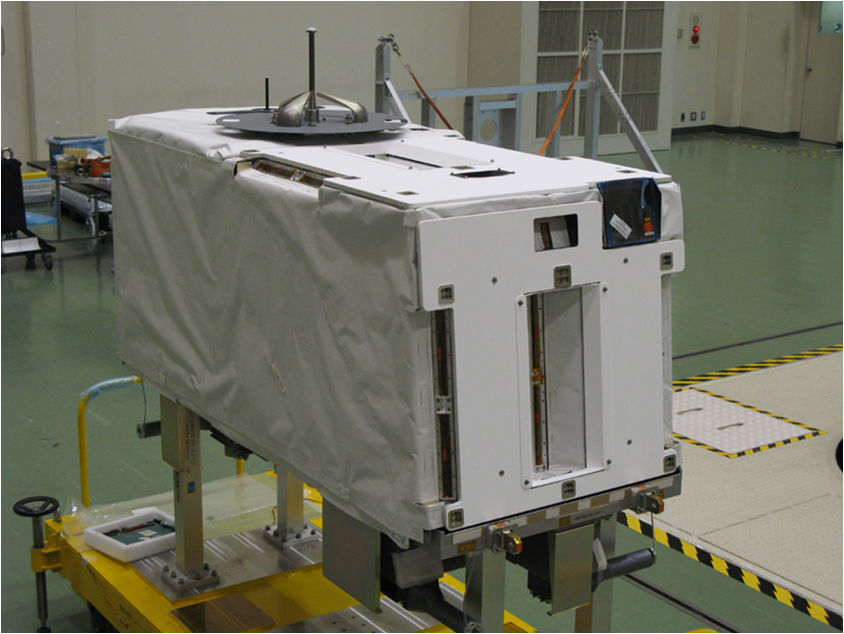
MAXI in the clean room with all its final covers and protective thermal blankets and foil installed.
MAXI instruments: GSC & SSC

Diagram of the MAXI cameras and covers.

Labeled pictures of the Gas Slit Camera (GSC) elements including the collimator and proportional counter.

Diagram showing how two different X-ray sources in the field of view of the GSC would be recorded on the
one-dimensional detector in order to map their location in the sky.

Diagram of the Solid State Camera (SSC) showing the horizontal (looking roughly “forward” into the direction of
orbital motion of the ISS) and zenithal (looking “up” away from the Earth) oriented elements.
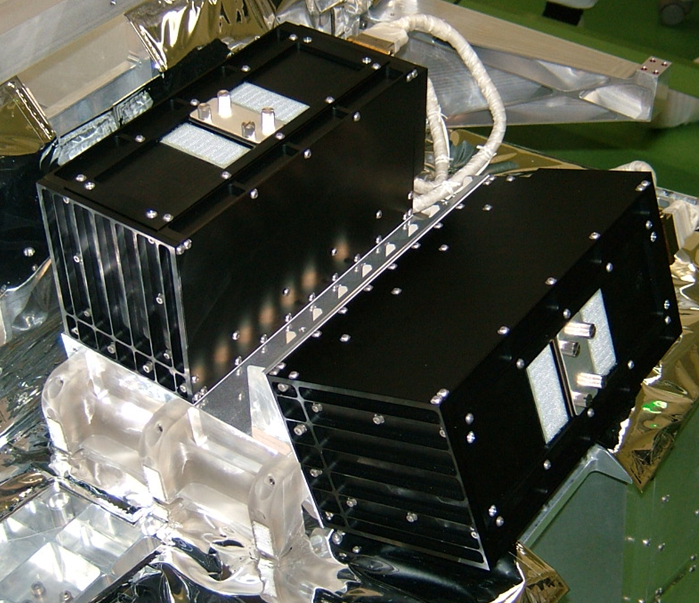
Photograph of the SSC in roughly the same orientation as the diagram above.


















